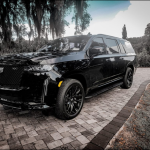The History and Evolution of Bulletproof Cars
People in high-profile standings are the main targets for others, and some of the most well-known people in history have been killed by outsiders shooting them. There are innumerable methods that a sharpshooter could use.
For example, Lee Harvey Oswald, a professional marksman, shot John. F. Kennedy from long coverage.
One of the favored methods for killers is to accomplish their target while sitting in a car. The prey is usually undoubtedly visible and, even more, satisfactory for the criminals; it’s also moderately easy for them to get away after that.
The car windows of normal cars will do nothing to stop a bullet from handing through and striking their target, making high-profile prey potentially powerless in traffic. However, a solution that keeps the target fairly safe by stopping bullets from hitting them is obtainable. The evolution of bulletproof cars has started from getting free of these problems. The glass of bulletproof cars is the best solution, and here we look at their history and evolution.

The Development of Bulletproof cars
Laminated and tempered glass for cars were continuously developed to make the glass more assertive and unassailable to make bulletproof cars. Both of them are the types of bullet-resistant glass; no one can stop a bullet outright. However, both can be used to make glass coatings that can stop a bullet completely, helping to save people from being shot.
When was Bulletproof Glass Invented?
In 1982, the first patent for ballistic glass was endowed. However, this came a year after one of the most prominent technology uses.
Modern performances of bulletproof glass used a combination of materials to stop bullets, including sheets of glass. As well as glass coatings, other key components of bulletproof glass are polycarbonate layers and acrylic, which help add extra strength and energy-absorbent credentials.
The portion of protection bulletproof glass and bulletproof cars deliver is organized on a scale of one to eight, with one delivering the lowest level of safeguard and eight presenting the highest. Level one bulletproof glass can resist effects from a minimum of three 9mm full metal jacket rounds, while group eight bulletproof glass must be able to resist at most inflexible effects from a minimum of five 7.62mm rifle contests.
How was the Bulletproof Glass of bulletproof cars Constructed?
Originally, bulletproof glass was made by dribbling molten glass into the water, pursued by fast cooling, which would solidify the glass. This would help the glass grip up to severe hammer collisions.
Future Evolution
Glass has come a long way since it was first found hundreds of years ago.
From the above explanation, it does not mean that the evolution of bulletproof cars has come to a stop; the study is ongoing to make the glass of bulletproof cars even more resilient than it is now. It is sure that in the future, we may see a more advanced bulletproof car that can resist any number of shots from effective weapons, with severely a blemish caused to the glass itself.



